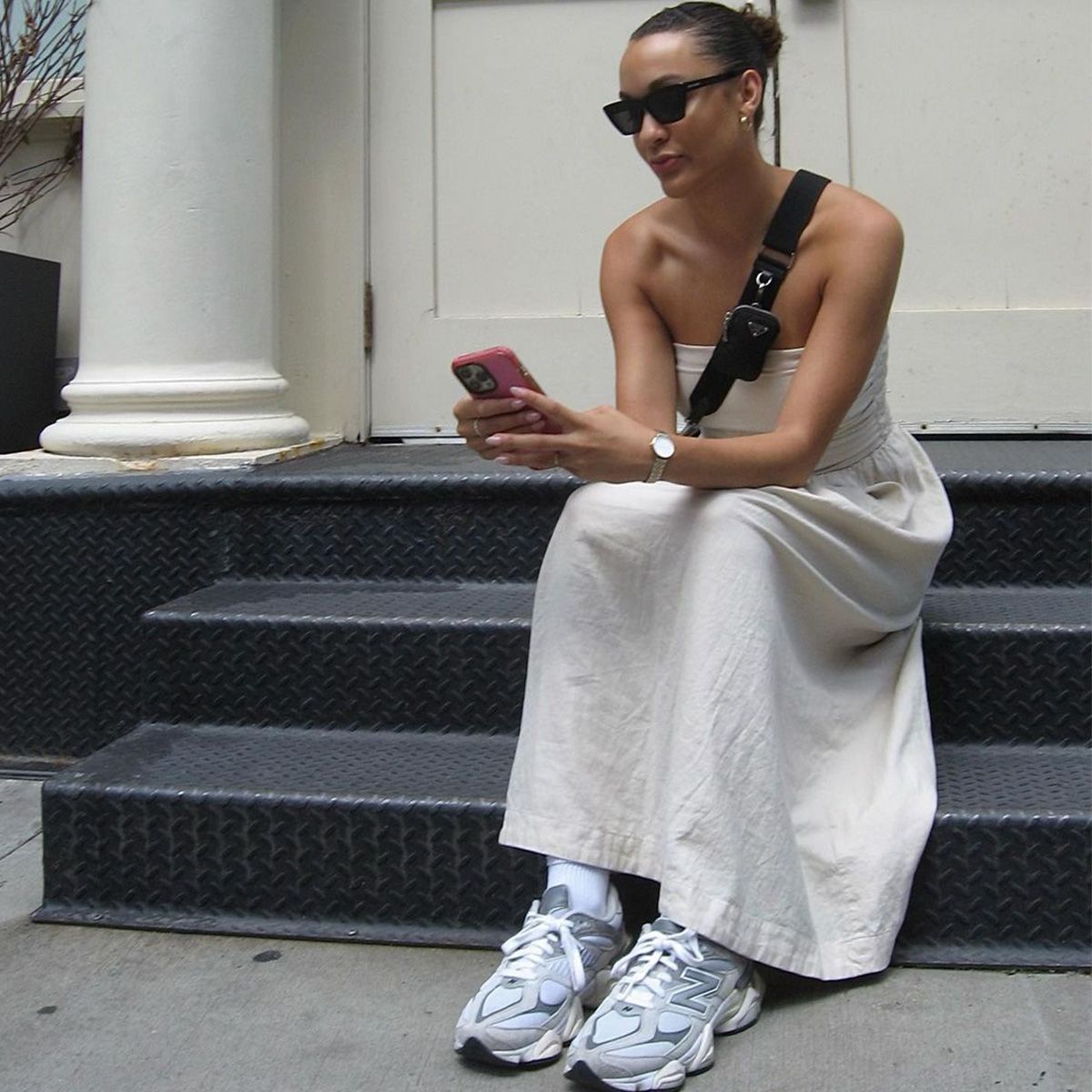
Tracy Bennett/Columbia Tri Star/Kobal/ShutterstockShutterstock
How long could you go without buying new clothes? A week? A month? Even longer? For many young women, shopping is a deeply ingrained habit. It’s little wonder we’re addicted to buying new clothes — we see thousands of ads every day — from new season and sales promotions on Instagram to shopping hauls on TikTok and Youtube. Breaking the cycle can have huge benefits for our wallets, wardrobes, the planet and our minds. So, could a shopping detox be just the thing you need to reset your relationship with your wardrobe?
Ayesha Barenblat, the founder of the global advocacy organisation Remake, which fights for garment worker rights and environmental justice in the fashion industry, certainly thinks so. In 2019, Barenblat launched the No New Clothes challenge, encouraging her community to buy nothing new for 90 days between June 1st and September 1st.
This content is imported from Instagram. You may be able to find the same content in another format, or you may be able to find more information, at their web site.
The idea came from reading the Power of Habit by Charles Duhigg, which theorises that changing habits takes three months. After hearing about the Remake community’s struggle with 24/7 marketing from fashion brands, Barenblat thought: “If it takes 90 days to break a bad habit, why don’t we just divest from fashion? It’s not to say that we want people to never buy, but if you don’t buy anything for 90 days, it’s an invitation to take stock of what is already in your closet and to get a sense of how much you actually need.”
No New Clothes is open to interpretation. For some people, it means going cold turkey, but others might switch to renting or buying secondhand. “No New Clothes is what makes sense to you — people are at different parts of their journey,” says Barenblat. “That has been important because it feels inclusive and accessible, rather than attempting to be die-hard, zero-waste people who buy nothing.”
Remake’s challenge ends just as Second Hand September, Oxfam’s annual campaign, kicks off. This year, Oxfam’s focus is more nuanced than in past years, looking deeper into the psychology of shopping. “This year, we’re certainly not just encouraging people to shop second hand, we’re asking people to consider shopping second hand as part of a commitment to making more sustainable choices,” says Lorna Fallon, retail director at Oxfam. “We recognise that it’s not the only solution, the solution is to slow down and buy what we truly need and will wear time and time again.”
As resale becomes more popular, there’s a risk of buying second hand fashion at the same voracious pace as we buy new clothing. The goal of a shopping detox is to ultimately slow down our clothing consumption long-term. “We know that for us to be a more climate-just and women-centric fashion industry, we have to stop the madness of overconsumption,” says Barenblat. “What we have learned is that people absolutely change their shopping habits and it stays with them once they have done a detox.”
This content is imported from Instagram. You may be able to find the same content in another format, or you may be able to find more information, at their web site.
Considering pressing pause on shopping? There are plenty of ways to spend all your newfound free time, like organising your wardrobe to fall back in love with old clothes, selling what you don’t wear on Vinted or Depop, setting up a clothes swap, and getting pieces fixed so they’re good as new. Set yourself a realistic time frame, team up with friends to hold each other accountable and remember that unlearning habits takes some time.
“If you’re thinking about taking the No News Clothes pledge, know that our individual tiny actions when we do them as a collective, really do matter,” says Barenblat. “This is a way for you to save money, be an active part of the climate justice and women’s rights movement in fashion, and make it really fun.”









